Brief History of the Hawkbill SS-366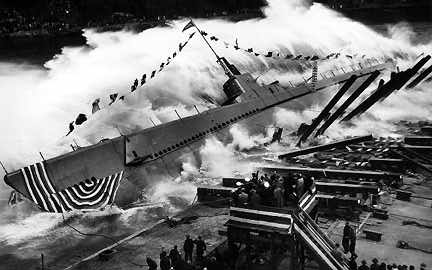
HAWKBILL (SS-366) was launched by Manitowoc Shipbuilding Co., Manitowoc, Wis. 9 January 1944; [Manitowoc was the only place that launched sideways--due to the narrow river. This was also the preferred method used by the Germans for their U Boats] sponsored by Mrs. F. W. Scanland, Jr., and commissioned 17 May 1944, Lt. Comdr. F. W. Scanland, Jr., in command. Named for the Hawksbill sea turtle, the "s" was inadvertently dropped at commissioning. Following a period of training on the Great Lakes, the submarine departed 1 June 1944 from Manitowoc to begin the long journey down the Illinois River and finally by barge down the Mississippi. She arrived New Orleans 10 June and, after combat loading, sailed 16 June for training out of the submarine base, Balboa, Canal Zone. With this vital training completed, she arrived Pearl Harbor 28 July for final preparations before her first war patrol. 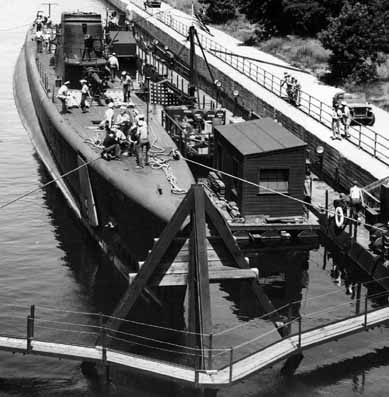 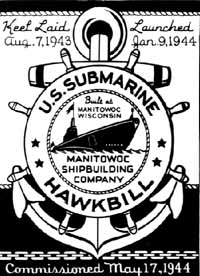
Captain Scanland related the following incident concerning the commissioning party: An Encounter With Organized Labor One of the most important ceremonies associated with the commissioning of a new ship in the U.S.Navy is the all hands social party held by the prospective officers, enlisted crew and their wives and girl friends. By tradition everyone wears his dress uniform, the ladies are in their best gowns and long skirts, the ballroom is decorated with signal flags and bunting, the best available music plays and the refreshments flow. It is a very special occasion, serving to bring the ship's company together to form that magic combination of men and their ship, and especially in time of war, to mark the approaching day of departure for sea and combat. In 1944 the brand new submarine HAWKBILL (SS 366) had recently been completed by the Manitowoc (Wisconsin) Shipbuilding Company, and had just been commissioned into the United States Navy. In planning for this day officers and men of her crew had spent many hours. The city fathers of Manitowoc had come to our rescue by offering the gymnasium of the local high school as the place for our party,. The date was set, invitations sent out to VIP guests, the hall decorated and the wonderful Glen Miller style dance band from the Great Lakes Naval Training Station near Chicago promised for the music and dancing. A week or so before that date of the party I, as the prospective skipper of the new submarine, received a telephone call from the office of the president of the national musicians' union, located in Chicago. I was informed that it was forbidden by the union for a military band to perform at a military event conducted other than on a military base, and if we intended to carry out the plans for our party we would be obliged to hire a union orchestra. I telephoned the office of the Secretary of the Navy to verify this amazing information, and was assured that Mr. [James] Caesar Petrillo, the union boss, was correct...we were required to hire Mr. Petillo's orchestra! My reaction was unabashed disbelief. How could any self respecting ship's company be held captive by a bunch of draft dodgers when they were about to sail to the western Pacific to engage the enemy in life threatening combat? NEVER!!! I called in George Grider, our wonderful Executive Officer, and issued an order. "George, please locate a small room in the basement of the gymnasium, and see that it has some chairs in it and a lock on the door. When Mr. Petrillo's orchestra arrives, escort them there. Tell them if they stop playing music during the party upstairs, there will be no pay. Then leave them and lock the door. Send an officer down there once in awhile to make sure they play. That evening the Navy band played their marvelous swing music for us and our guests until midnight, when we were all ready to call it a night. Just a handful knew that down in the basement Mr. Petrillo's musicians played only to themselves. 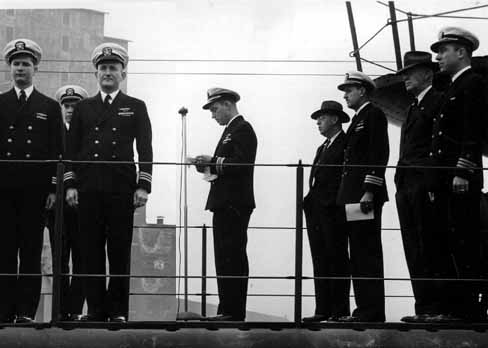 Captain Scanland addresses the crew during commissioning ceremonies.
Captain Scanland addresses the crew during commissioning ceremonies.
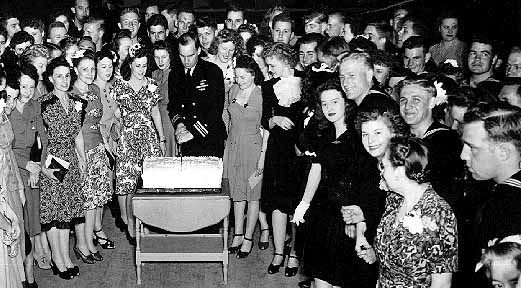 The cake is officially cut at the party The cake is officially cut at the party
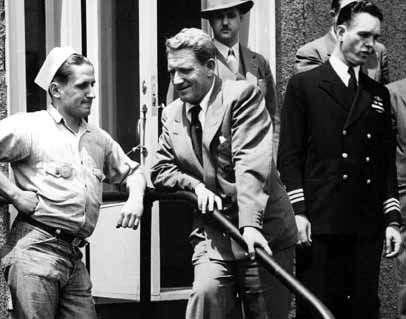 Movie star Spencer Tracy, while attending the ceremony, chats with crewman Hank Norde. Movie star Spencer Tracy, while attending the ceremony, chats with crewman Hank Norde.
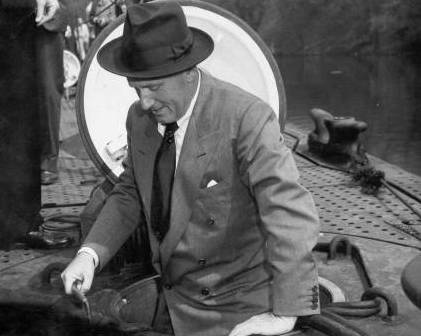 Spencer Tracy about to inspect the inside of the Hawkbill. Spencer Tracy about to inspect the inside of the Hawkbill.
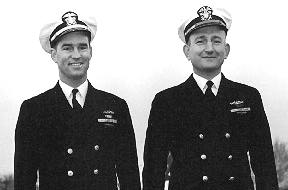
CO Worth Scanland and XO George GriderFollowing the surrender of Japan, HAWKBILL sailed to Pearl Harbor, departing 22 September 1945 for San Francisco. She decommissioned at Mare Island 30 September 1948 and joined the Reserve Fleet. Brought out of reserve in 1952, HAWKBILL was loaned to the Netherlands under the Military Assistance Program 21 April 1953 and served as ZEELEEUW (S-803). 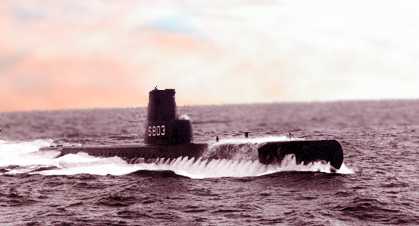
Hawkbill serving as Zeeleeuw S-803Ed note: The Hawkbill was sold in 1970 to a Dutch Company for scrap. For a complete history and pictures of the Zeeleeuw S-803 www.DutchSubmarines.com. Zeeleeuw translated means "Sea Lion" and is pronounced Zay Lay'oh.HAWKBILL received six battle stars for World War II service. All five of her war patrols were designated successful, and she received a Navy Unit Commendation for her outstanding performance on all five patrols. The 28 Boats built in Manitowoc during WWIIPeto SS-265 Golet* SS-361 Lagarto* SS-371 Pogy SS-266 Guavina SS-362 Lamprey SS-372 Pompton SS-267 Guitarro SS-363 Lizzardfish SS-373 Puffer SS-268 Hammerhead SS-364 Loggerhead SS-374 Rasher SS-269 Hardhead SS-365 Macabi SS-375 Raton SS-270 Hawkbill SS-366 Mapiro SS-376 Ray SS-271 Icefish SS-367 Menhaden SS-377 Redfin SS-272 Jallao SS-368 Mero SS-378 Robalo* SS-273 Kete* SS-369 Rock SS-274 Kraken SS-370 * Lost in Combat A Portion of the Diary of EM3(ss) Claire MacLeod 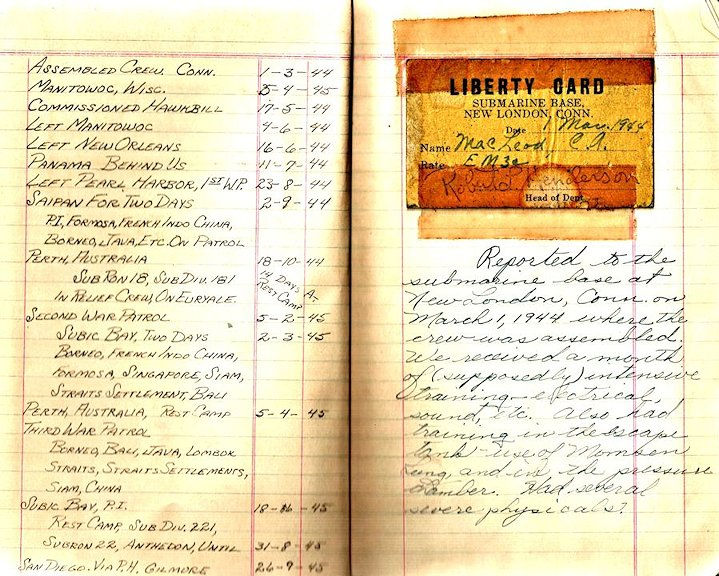
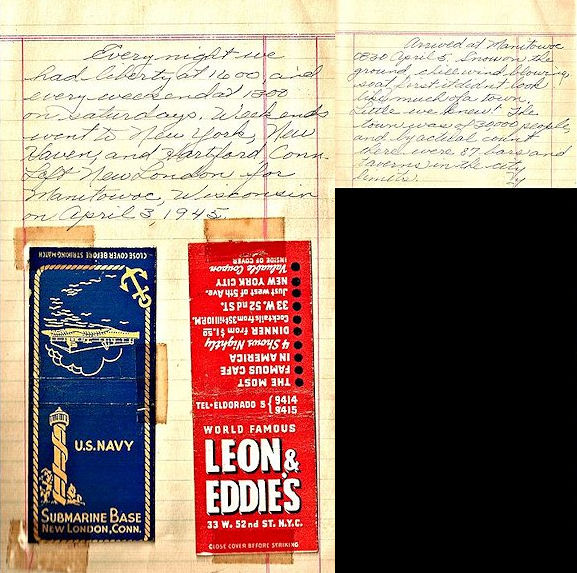
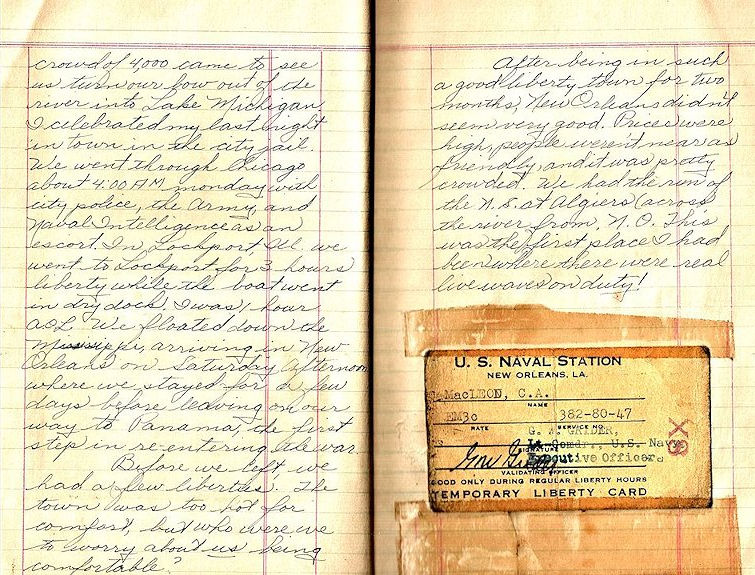
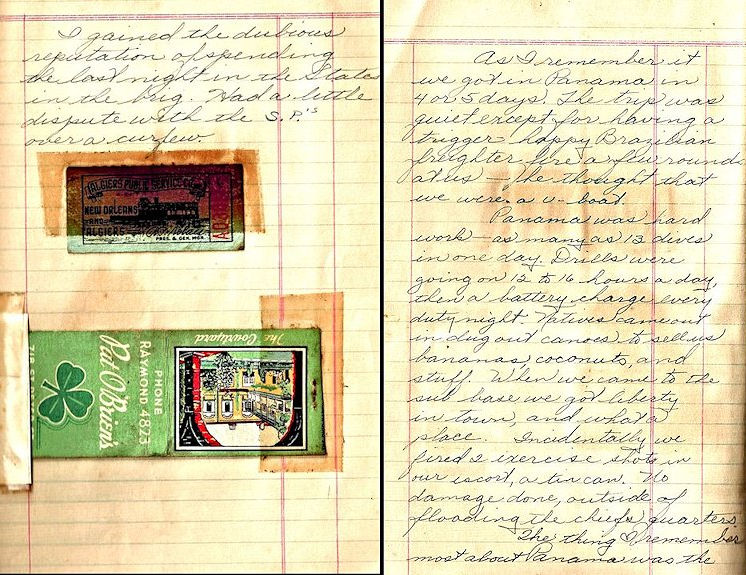
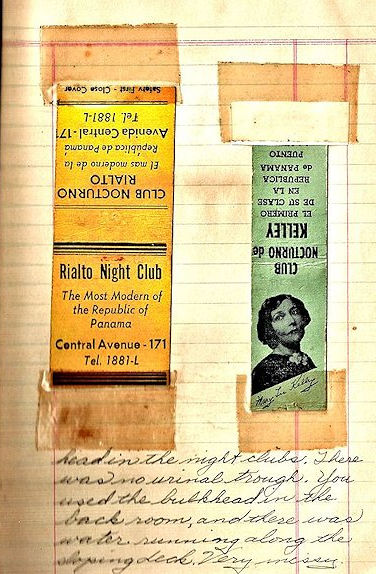
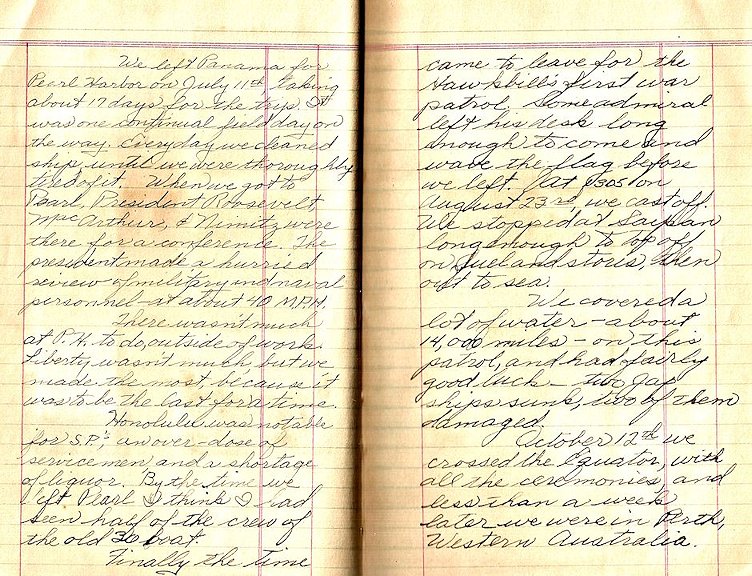
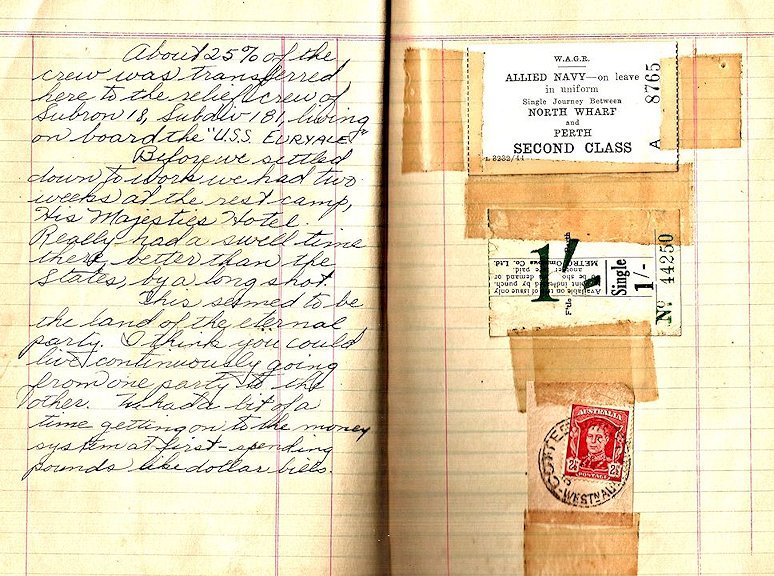
Submission courtesy of John MacLeod |
